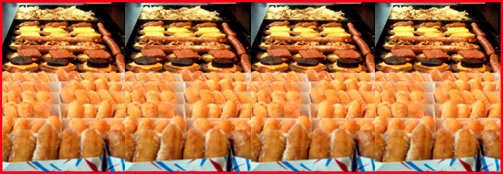
When people are concerned about health, and especially about obesity, and they talk about food labeling, there are a couple of different things they might mean. Fast food restaurants with more than 20 branches now have to give the calorie count on their menus, and items sold in vending machines need to print the information on their packaging. That’s one kind of labeling.
Up until now, we’ve had the same nutrition labeling since 1994, based on the provisions of a law passed in 1990, the Nutrition Labeling and Education Act. This was Dr. David Kessler‘s baby, one of the many innovations brought about during his tenure as Commissioner of the Food and Drug Administration. The nutrition facts label is supposed to specify what percentage of a nutrient is present, as a percentage of the recommended dietary allowance. For instance, the label could indicate that the product contains 25% of the vitamin D a person should have in a day.
The label also tells the calorie count per serving, and how many of the calories are supplied by fat. The actual ingredients are required to be listed according to their weight. If a product is made mostly from water, it has to list water first. And now, a whole different kind of food label is being proposed. We have talked before about hedonic, hyperpalatable foods, and how the FDA does not seem overly concerned about them. Or even mildly concerned. This could change.
There is food, and then there is a whole grotesque array of pseudo-foods, fake foods, ersatz foods, and deceptively foodlike substances. It is cunningly engineered Frankenfood, designed to hook us, and doing a good job of it. When Dr. Pretlow presented a poster, “Food Addiction in Children,” at the scientific meeting of the Obesity Society in 2010, food company representatives did not challenge his ideas, but asked for more information. He says,
I told them that they needed to regard their products like ‘booze,’ with warning labels and controls in regard to children.
One definition of junk food is that it has negative value, and does you more harm than good. A hefty number of popular snacks fall into that category. By the time you add up all the fat, sugar, salt, and chemicals, it’s quite a witches’ brew. So, how should this problem be dealt with? One suggestion is to require labeling that warns of the possible dangers. With pictures.
The government has posted a large collection of the graphics that have been proposed for Cigarette Product Warning Labels (PDF). Some of them are quite off-putting, like the hardcore nicotine addict with smoke pouring out of his tracheostomy. If you only want to see a few examples, check out The New York Times article by Gardiner Harris, who says,
Federal drug regulators… unveiled 36 proposed warning labels for cigarette packages, including one showing a toe tag on a corpse and another in which a mother blows smoke on her baby.
Dr. William Dietz is a director at the Centers for Disease Control, of the Division of Nutrition, Physical Activity, and Obesity. At that same Obesity Society gathering we mentioned earlier, he compared the obesity epidemic to the cigarette-smoking epidemic. Dr. Pretlow says,
Although Dr. Dietz fell short of acknowledging that food may be an addictive substance similar to tobacco, he proposed that the obesity epidemic be dealt with similarly to smoking. Do we therefore label junk food with a photo of a morbidly obese person with a super-size pizza or a gastric-bypass patient eating chocolate bars…
It’s an interesting idea. So are the possibilities for the verbal caveats:
WARNING: To susceptible persons, certain foods can be addictive.
WARNING: Obesity causes excessive sweating, uncomfortable chafing, and broken chairs.
WARNING: Obesity can lead to social ostracism and low self-esteem.
WARNING: Junk food causes too many ugly medical conditions to list here, but believe us, you don’t want any of them.
WARNING: They call it “Morbid Obesity” for a reason.
Your responses and feedback are welcome!
Source: “Cigarette Product Warning Labels” (PDF), FDA.gov
Source: “F.D.A. Unveils Proposed Graphic Warning Labels for Cigarette Packs,” The New York Times, 11/10/10
Image by Christian Cable, used under its Creative Commons license.

 FAQs and Media Requests:
FAQs and Media Requests: 











